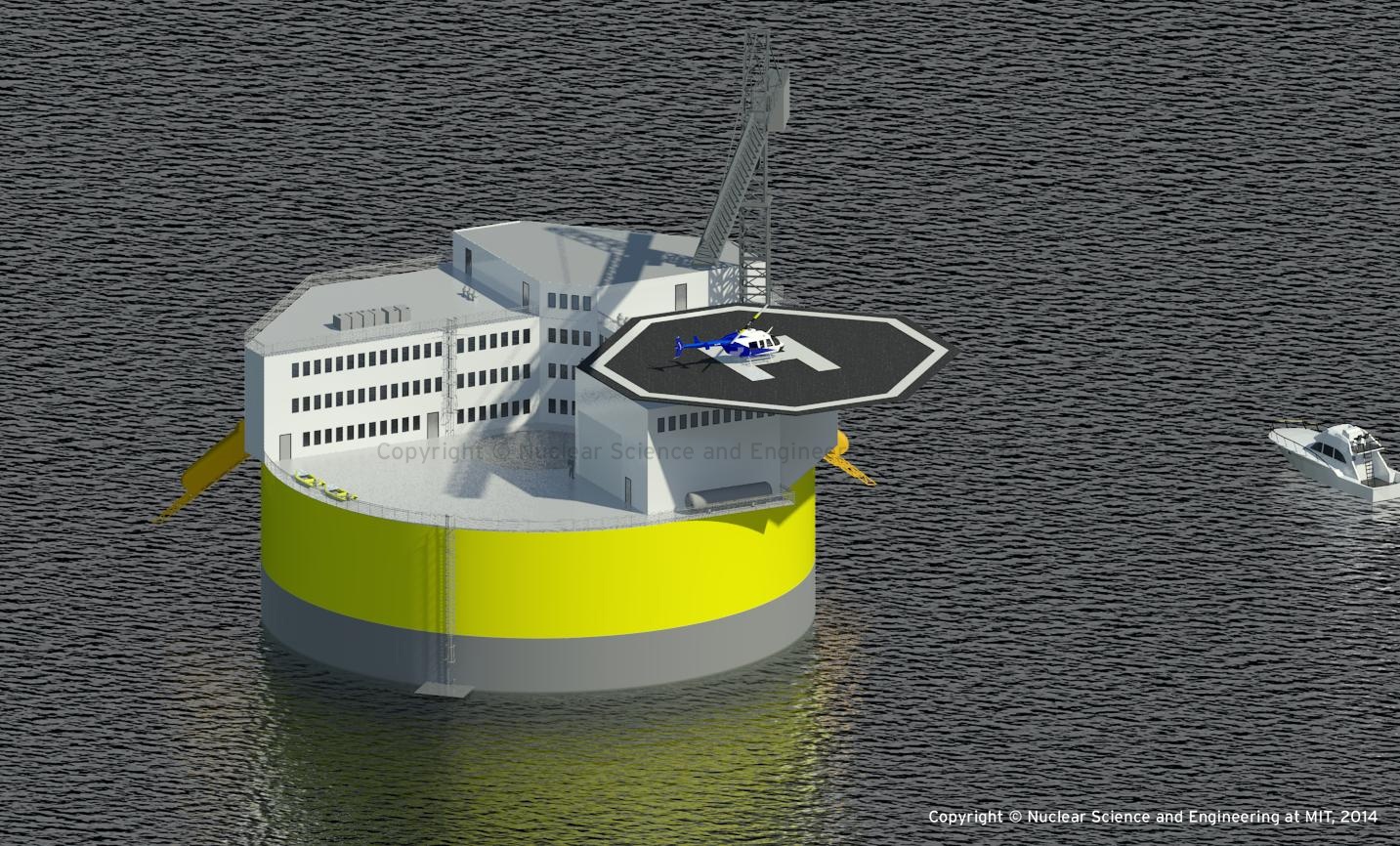This is the home of the MIT Offshore Floating Nuclear Plant (OFNP). We created this page to crowdsource new and creative ideas to make our reactor concept safer, more economical, and more efficient. Please choose one of the links on the left to get started.
In this project we are developing a new Offshore Floating Nuclear Plant (OFNP) concept that achieves unprecedented levels of safety. This is a plant that can be entirely built on a floating rig in a shipyard, towed to the site, where it can be anchored a few miles off the coast in relatively deep water, and connected to the grid via an underwater transmission line.
The floating plant has the following features:
- Shipyard construction enhances quality, reduces construction time and provides a reliable modularization approach;
- The plant site can be returned to “green field” conditions after the plant is towed away from the site;
- Plant decommissioning is done quickly and cost-effectively in a centralized shipyard (like the U.S. Navy nuclear submarine and carrier fleets);
- Coastal land usage is reduced to essentially zero, substantially increasing the number of potential sites;
- Safety concerns from earthquakes and tsunamis are eliminated;
- The ocean heat sink can be used to ensure decay heat removal indefinitely, without the need for external power or intervention.
The likelihood of accidents with fuel damage and radionuclide release is drastically reduced, and the need for land evacuation is eliminated. Both features are responsive to the new safety imperatives of a post-Fukushima world. Furthermore, the offshore floating plant concept can transform the economic paradigm of nuclear energy through radical innovations in the way nuclear plants are built, operated and decommissioned.
Suitable sites are selected according to the presence of relatively deep water near shore (this ensures that tsunamis waves are small), cost of other modes of electricity generation (e.g. natural gas, coal), proximity to major load centres (e.g., coastal cities, industrial installations), low frequency and intensity of storms, and distance from major shipping lanes. Many such sites have been identified in established markets such as East and Southeast Asia and the Persian Gulf, but also growing markets like South America and Africa, as well as small island countries, large mining operations, and Department of Defense bases.

3 Comments
Anonymous
Instead of designing an entirely new reactor design, use a SMR such as NuScales reactor. This could make refueling even easier and eliminates the spent fuel pool. Also reduces cost of the facility as the reactor components are off the shelf items that are easily manufactured and shipped. If you went this route you would not have to tow the rig back to the shipyard to refuel, simply ship the new SMR there, take out the old one, and bring the old one back to shore for reprocessing.
Anonymous
Agreed. NuScale is closer to full NRC Build Permit.! Win.Win on Land cost & threat of tsunamis. Great Idea.! Endless Heat sink with Sea Water. LFTR Reactor could use sea for Desalt water plant.
Anonymous
This seems like a fantastic idea . Solves all the problems except spent fuel we need to reopen yucca Mtn. Keep going and get a pilot plant up and running this could help save our planet. Arnie Borreson